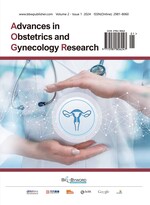Abstract
Objective: To explore the application effect of painless delivery technology in clinical obstetrics. Methods: Clinical data of 900 women who gave birth were collected and randomly divided into groups A and B, each comprising 450 cases. Group A served as the control group, while Group B acted as the observation group. Group A underwent natural delivery, whereas Group B received combined spinal-epidural anesthesia for painless delivery. The effects of these two delivery techniques were comprehensively evaluated based on maternal pain level, postpartum recovery, postpartum lactation, and other relevant indicators. Results: In Group B, there were more individuals with pain levels of 0 and 1 compared to Group A, and significantly fewer individuals with pain levels of 2 and 3 than in Group A (P < 0.05). This suggests that the pain level in Group B was significantly superior to that in Group A. Additionally, postpartum recovery indicators among mothers in Group A were significantly higher than those in Group B (P < 0.05). Furthermore, the time for the onset of colostrum mobilization and adequate breast milk production was significantly longer in Group A compared to Group B (P < 0.05). Conclusion: Combined spinal-epidural anesthesia with ropivacaine + sufentanil demonstrates a positive application effect in painless delivery.
References
Dong L, Cai L, Liu H, et al., 2015, Analysis of the Efficacy and Safety of Combined Spinal-Epidural Anesthesia for Painless Delivery. Chinese Journal of Modern Medicine, 25(3): 91–93.
Xing S, Lu W, Wang Y, et al., 2019, Application of Open Delivery Room Combined with Painless Delivery in Obstetrics and Its Impact on the Delivery Process. Chinese Clinical Journal of Obstetrics and Gynecology, 20(1): 75–76.
Song X, 2010, Application of Painless Delivery in Obstetrics. Journal of Clinical Rational Drug Use, 3(10): 28–29.
Zhang M, Yang H, Li H, et al., 2005, Analysis of the Impact of Subarachnoid Space Block Plus Epidural Block and Epidural Block Alone on Labor Progress. Chinese Journal of Obstetrics and Gynecology, 2005(6): 365–368.
Huang Y, Zuo M, Gu H, 2014, Application of Combined Spinal and Epidural Anesthesia in Painless Delivery. Jiangsu Medicine, 40(12): 1465–1466.
Han B, Xu M, Bai Y, 2020, Clinical Effect of Ropivacaine Combined with Sufentanil Continuous Subarachnoid Anesthesia for Labor Analgesia During the Whole Process. Journal of Clinical Anesthesiology, 36(2): 115–119.
Sun X, Song Y, 2008, Application of Combined Spinal-Epidural Anesthesia in Painless Delivery and Its Impact on the Active Phase. Chinese Maternal and Child Health Care, 2008(5): 705–706.
Zong Y, Nie Y, Jiang Y, et al., 2016, Clinical Study on the Painless Delivery Effect and Stress Response of Patient-Controlled Analgesia with Ropivacaine Epidural. Chongqing Medicine, 45(17): 2407–2409.
Veringa l, Buitendijk S, de Miranda E, et al., 2011, Pain Cognitions as Predictors of the Request for Pain Relief During the First Stage of Labor: A Prospective Study. J Psychosom Obstet Gynaecol, 32(3): 119–125. https://doi.org/10.3109/0167482X.2011.599898
Van de Velde M, Dreelinck R, Dubois J, et al., 2007, Determination of the Full Dose-Response Relation of Intrathecal Bupivacaine, Levobupivacaine, and Ropivacaine, Combined with Sufentanil for Labor Analgesia. Anesthesiology, 106(1): 149–156. https://doi.org/10.1097/00000542-200701000-00024
Zhang Y, Jiang X, Han X, 2009, Experimental Study on the Application of Ropivacaine and Sufentanil in Painless Delivery. Chinese Maternal and Child Health Care, 24(28): 4025–4026.
Wang J, 2014, Effect of Sufentanil and Ropivacaine Combined for Labor Analgesia on Labor Progress and Cesarean Section Rate. Chinese Maternal and Child Health Care, 29(16): 2627–2628.
